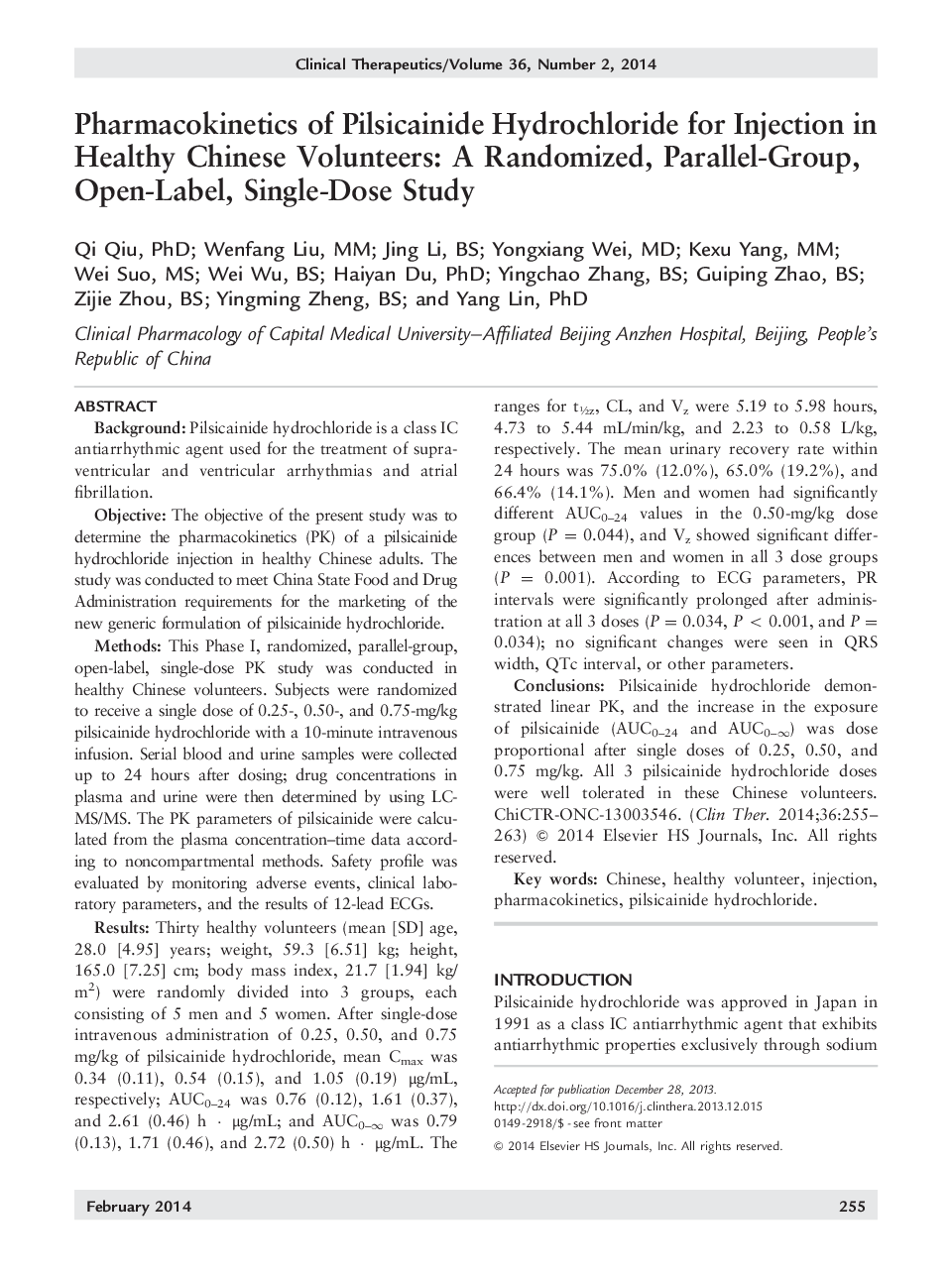| Article ID | Journal | Published Year | Pages | File Type |
|---|---|---|---|---|
| 5825575 | Clinical Therapeutics | 2014 | 9 Pages |
BackgroundPilsicainide hydrochloride is a class IC antiarrhythmic agent used for the treatment of supraventricular and ventricular arrhythmias and atrial fibrillation.ObjectiveThe objective of the present study was to determine the pharmacokinetics (PK) of a pilsicainide hydrochloride injection in healthy Chinese adults. The study was conducted to meet China State Food and Drug Administration requirements for the marketing of the new generic formulation of pilsicainide hydrochloride.MethodsThis Phase I, randomized, parallel-group, open-label, single-dose PK study was conducted in healthy Chinese volunteers. Subjects were randomized to receive a single dose of 0.25-, 0.50-, and 0.75-mg/kg pilsicainide hydrochloride with a 10-minute intravenous infusion. Serial blood and urine samples were collected up to 24 hours after dosing; drug concentrations in plasma and urine were then determined by using LC-MS/MS. The PK parameters of pilsicainide were calculated from the plasma concentration-time data according to noncompartmental methods. Safety profile was evaluated by monitoring adverse events, clinical laboratory parameters, and the results of 12-lead ECGs.ResultsThirty healthy volunteers (mean [SD] age, 28.0 [4.95] years; weight, 59.3 [6.51] kg; height, 165.0 [7.25] cm; body mass index, 21.7 [1.94] kg/m2) were randomly divided into 3 groups, each consisting of 5 men and 5 women. After single-dose intravenous administration of 0.25, 0.50, and 0.75 mg/kg of pilsicainide hydrochloride, mean Cmax was 0.34 (0.11), 0.54 (0.15), and 1.05 (0.19) μg/mL, respectively; AUC0-24 was 0.76 (0.12), 1.61 (0.37), and 2.61 (0.46) h · μg/mL; and AUC0-â was 0.79 (0.13), 1.71 (0.46), and 2.72 (0.50) h · μg/mL. The ranges for t½z, CL, and Vz were 5.19 to 5.98 hours, 4.73 to 5.44 mL/min/kg, and 2.23 to 0.58 L/kg, respectively. The mean urinary recovery rate within 24 hours was 75.0% (12.0%), 65.0% (19.2%), and 66.4% (14.1%). Men and women had significantly different AUC0-24 values in the 0.50-mg/kg dose group (P = 0.044), and Vz showed significant differences between men and women in all 3 dose groups (P = 0.001). According to ECG parameters, PR intervals were significantly prolonged after administration at all 3 doses (P = 0.034, P < 0.001, and P = 0.034); no significant changes were seen in QRS width, QTc interval, or other parameters.ConclusionsPilsicainide hydrochloride demonstrated linear PK, and the increase in the exposure of pilsicainide (AUC0-24 and AUC0-â) was dose proportional after single doses of 0.25, 0.50, and 0.75 mg/kg. All 3 pilsicainide hydrochloride doses were well tolerated in these Chinese volunteers. ChiCTR-ONC-13003546.
